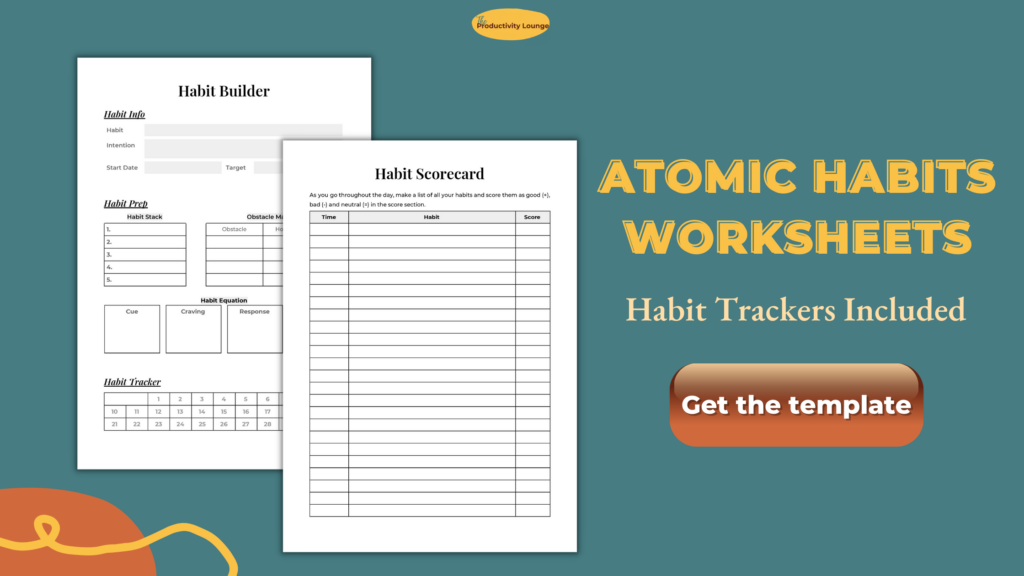Implementing Atomic Habits in real life
Habit building can be really difficult for some habits and easy for a few others. There are so many books out there that talk about habit building. I have implemented a lot of those ways throughout the last 5 years of my life. After reading atomic habits, my entire world view was changed. In this post, I want to share how you can start implementing atomic habits.
Atomic habits is a revolutionary book that works like magic. You have to do the work – there is no substitute for that. But if you do it by the book’s technique, the results are almost guaranteed. I have mentioned some of the best concepts from the book in my blog post – How to stick to your habits?
In today’s blog post, I want to share a step-by-step method to implement atomic habits in your life.
Now let’s dive deeper on implementing these strategies from Atomic Habits.
Implementing atomic habits
Let’s get to the creamy part now – implementing atomic habits in your life. For me, having some sort of a planner or a worksheet always helps. That is why I had designed a worksheet for implementing atomic habits. You can get this worksheet with some habit tracker spreads by clicking right here.

Let’s look at this 5 step process now –
1. Identify the habit Loop
Habit loop is a concept by James Clear that he has explained in his book ‘Atomic Habits’. The habit loop is — Cue -> Craving -> Response -> Reward. Now, for the habit that you are trying to build, identify these 5 elements of the loop. Also, make sure that these elements are enticing towards your habits.
- The cue should be obvious
- The craving should be attractive
- The response should be easy
- The reward should be satisfying
For example, if you are trying to build a habit of reading, the habit loop may look like –
- Cue – Seeing the book on your night stand
- Craving – To read and go ahead with the story
- Response – Reading
- Reward – Getting more knowledge about the story / Ticking the habit in your habit tracker
2. Stack your habit
This works hand-in-hand with making the cue obvious. Identify any time in your day when you want to implement this habit. Check for your existing routine during this time. Add your habit on top of any existing habit. This helps you make your cue obvious.
Your cue is your existing habit.
For example, if you are trying to build a habit of doing breathwork in your day and you want to do it in the morning. Make a list of all the habits that make up your morning routine. You can do your new habit after your existing habit of brushing your teeth. In this case, your cue is brushing your teeth.
3. Map your obstacles
This method is a game changer when trying to build better habits. I have been using this technique for over 3 years now and trust me it has saved me a lot of energy. Let me explain what obstacle mapping exactly is.
Whenever you start building a habit, all days are not going to be alike. Your situation, energy levels and surroundings are going to vary. Obstacle mapping means being prepared for these adversities.
In this step, you will create a ‘if.. Then…’ list. Which means ‘if xyz obstacle comes, then I will do abc’. Let me give you an example.
- If it is raining outside, I will do home-workouts instead of running.
- If I feel tired to go for running, I will do Yoga.
This way, you will always have a back-up plan to keep up with your habit. This is crucial because when these obstacles come, you will feel too overwhelmed to create a back-up plan. Having it written down beforehand can be a game-changer. The obstacle mapping step is included in the habit builder worksheet.
4. Write the intention down
Intention setting is one thing that can help you stay clear and focused on your goals and habits. James clear calls it the ‘Implementation intention’. It means having a specific time and place written down to perform that habit. The implementation intention equation is
I will ___(Action)___ at ___(Time)__ in __(Location)__
When you exactly know what needs to be done, when it needs to be done and where it needs to be done, then doing it becomes easy. For example, set your intention as –
I will drink a glass of lemon water at 6:30 am in my kitchen.
But take it from me, you will not follow through this exact time and place every single time. And that is okay. Some days, when you wake up late, you will do it at a later time. When you are travelling, you will do it in some other place. But having this intention set helps your for all those other normal boring days.
5. Start and track your habits
This is the final, but the most important step. You need to start taking action at this point. All the planning and preping is done – you need to start putting in the work. Start performing the habit based on the first three steps. Use the habit loop to keep doing the habit every single day.
But the key while taking action is tracking it. Maintain a habit tracker or a habit journal that will help you track your progress. Maintaining a log can itself motivate you to do the habit again the next time. Crossing off that box in your habit tracker can be highly satisfying.
Practical tips for habit building –
Before you start habit building with extreme amounts of motivation in your blood, I want to disclose some practical and realistic tips that will help you keep going in the long term. These tips are important to inculcate because many people start out strong and get weaker as time passess by.
While implementing atomic habits, it’s our basic goal to make this habit a part of our lifestyle. This habit is meant to bring a positive change in your life and that is why you are not going to just ‘wing it’. Get on board with these basic hacks and it will become much easier for implementing atomic habits in your life.
#1 Start with one habit at a time
The biggest mistake I see people make while changing their lives is that they start off with too many habits at the same time. It is important or you to understand that you have a limited amount of time, energy and will-power every single day. It is always smart to master one thing and then move on to the next.
Take any one habit that you want to build and implement it using atomic habits. Once you feel like this habit has become your lifestyle, then you can go ahead and start a new one. But never take on more than 1 habit – because chances are that you will end up abandoning everything you started.
#2 Have a physical habit tracker somewhere where you can see
You must have read the tip to ‘start a habit tracker’ in multiple articles and blogs. But that is not all. I urge you to have a physical habit tracker – maybe in your planner or on your cork board or anywhere you can easily see it.
I have tried using habit tracking apps dozens of times – and it has never worked! I always end up ignoring the notifications, forgetting to log in and deleting the app eventually. It is always easier to clear off your digital habit tracker. Having a physical tracker right in front of you is always more compelling.
#3 Maintain a habit journal to note every day’s experience
This last tip may or may not work for you based on your personality type. I have recently tried maintaining a habit journal on my ipad. Every-single day, before I sleep, I get my journal (my ipad) out and write about my experience doing / not doing the habit. Here is what you can write in it –
- If I did the habit –
- How did I feel before I started
- How did I feel while I was doing my habit
- How did I feel after I had done the habit
- If I did not do the habit –
- Why did I not do this habit?
- How did it make me feel by not doing it?
Maintaining this journal has helped me see the points of resistance while performing the habits. I also noticed so many patterns in the long run. For example, I tend to not go out for workouts before my monthly cycle because of my back ache. I tend to give up on my budget in the last few days of the month.
A habit journal can help you get better at building or breaking habits. These steps will help you build better habits with ease. You have to put in the efforts, but doing that becomes less stressful with atomic habits. Let me know your experiences with this method in the comments below.


